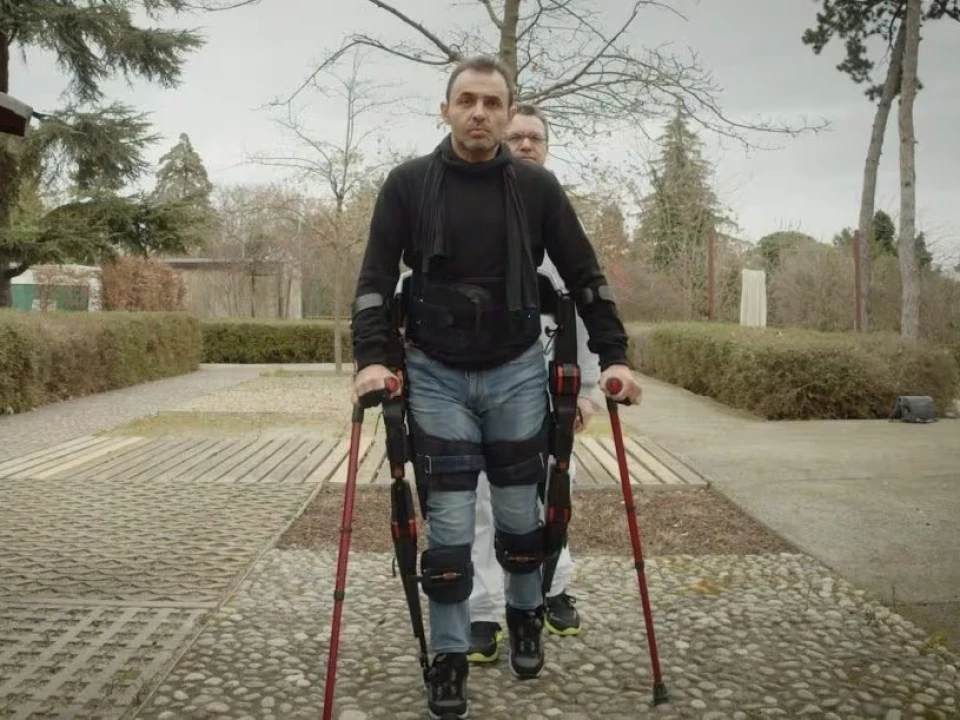Imagine losing the use of your legs. A car accident, a sudden illness, a life-breaking trauma. The physical pain, the psychological frustration, the anguish of an immobile future. What if you were told that there is a technology that can make you walk again? Not a distant future, but the present.
This is the story of Alex Santucci, a 49-year-old office worker from Bologna. One day, his life is turned upside down by an accident that forces him into a wheelchair. But Alex does not give up.
His tenacity leads him to Twin, a state-of-the-art robotic exoskeleton, the result of years of research and collaboration between the Italian Institute of Technology (IIT) and the Inail Prosthesis Center.
Twin is not a simple exoskeleton. It is a true "second skin" that adapts to each patient's needs. A lightweight metal structure attaches to the legs, while electric motors controlled by a central unit move the joints with a smooth and natural motion. A technology that opens up new possibilities for those who have lost the use of their legs.
Alex's excitement as he takes his first steps with Twin is immense. Tears of joy furrow his face, while a sense of freedom and hope pervades him. His story is not an isolated case. In different parts of the world, exoskeletons are giving new hope to thousands of people.
The challenges they face are not few. For those with a complete spinal cord injury, the main obstacle is the lack of proprioception, the ability to perceive one's body position. But advances in technology and the constant assistance of experienced physical therapists can help overcome even this obstacle.
Alex's story is a symbol. A symbol of human tenacity and the power of technology to change people's lives. A message of hope for those who have lost mobility and dream of walking again.
But the research does not stop. The goal is to refine this technology to make it ever more accessible and performant. New frontiers are opening with neural interfaces, such as Elon Musk's, that could allow exoskeletons to be controlled by thought alone. A future that seems like science fiction, but could become reality sooner than we think.
The hope is real. The technology is ready. The future is already here.
In addition to Twin, other research projects promise further advances. There are exoskeletons for motor rehabilitation, for assistive robotics in industry, and even for space exploration.
A world in which walking is not a dream but a reality. A world where technology helps us overcome our limitations and live fuller lives.
This is the future that exoskeletons are delivering to us. A future of hope, freedom and rebirth.




